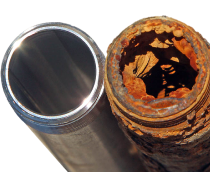The earliest types of French drains were basic trenches that were pitched from a high region to a lower one and loaded up with rock. These may have been developed in France yet Henry Flagg French (1813-1885) of Harmony, Massachusetts, a legal counselor, and Colleague U.S. Depository Secretary depicted and promoted them in Ranch Drainage (1859). French’s drains were made of segments of standard material tile that were laid with a 1⁄8 in (0.32 cm) in the middle of between the areas to concede water click here . Afterward, specific drain tiles were planned with holes. To forestall stopping up, the size of the rock fluctuated from coarse in the middle to fine outwardly and was chosen dependent upon the degree of the encompassing soil. The extents of particles were basic to forestalling the encompassing soil from washing into the pores, I. e., voids between the particles of rock and subsequently obstructing the drain. The later improvement of geotextiles incredibly worked on this strategy. Subsurface drainage frameworks have been utilized for a really long time. They have many structures that are comparative in plan and capability to the customary French drain.

Drainage framework structure
- Measuring contemplations
Cross-segment view showing French drain with two underground lines. Contingent upon the normal level and volume of water or overflow, French drains can be augmented or additionally found on a few underground drain pipes. Numerous lines likewise accommodate overt repetitiveness, on the off chance that one line becomes stuffed or obstructed by a burst or imperfection in the funneling. A line could become overloaded in the event that it is on a side of the drain which gets a lot bigger volume of water, for example, one line being more like a difficult slant, or more like a roofline that dribbles close to the French drain. At the point when a line becomes packed, water can leak sideways into an equal line, as a type of burden adjusting, so neither one of the lines becomes eased back via air rises, as could occur in a full line with no upper air space.
- Channels and envelopes
Channels – Porous materials, regularly non-woven texture, may incorporate sand and rock, put around the drainage line or envelope to confine movement of non-colloidal particles from the encompassing soils.
Envelopes – Rock, stone, rock, or encompassing line. These are porous materials put around line or drainage items to further develop stream conditions in the space quickly around the drain and for further developing sheet material and underlying refill conditions.
- Establishment
French drains are in many cases introduced around a home establishment in two unique ways, or in blend with both:
- Covered around the outer side of the establishment wall
- Introduced under the storm cellar floor within the border of the cellar
In many homes, an outer French drain or drain tile is introduced around the establishment walls before the establishment soil is refilled. It is laid on the lower part of the unearthed region, and a layer of stone is laid on top. As a rule, a channel texture is then laid on top of the stone to hold fine residue and particles back from entering. When the drain is introduced, the region is refilled and the framework is let be until it stops up.
